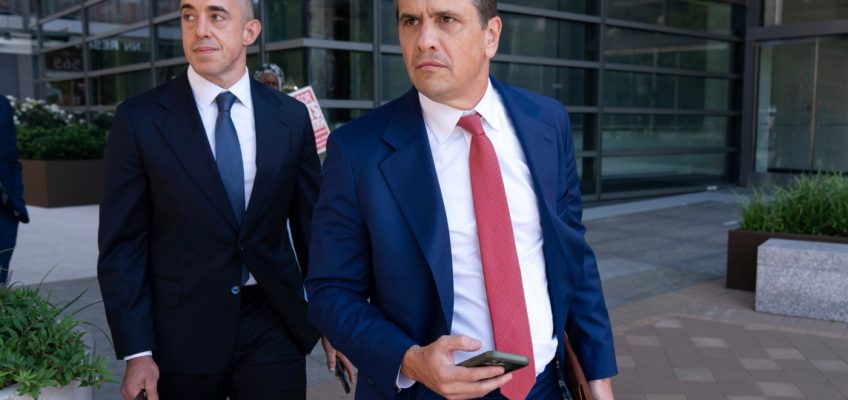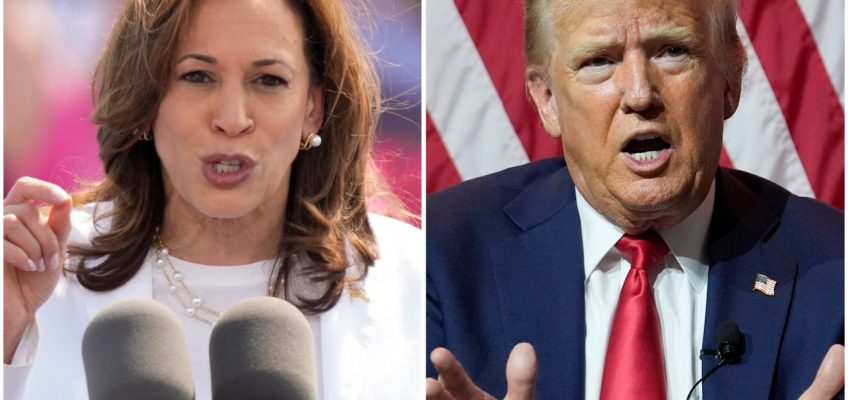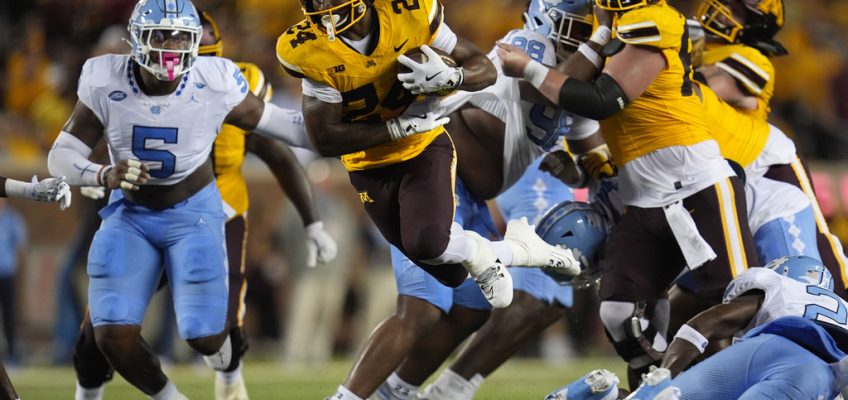By ERIC TUCKER, ALANNA DURKIN RICHER and MICHAEL KUNZELMAN Associated Press
WASHINGTON (AP) — In the first court hearing in nearly a year, a lawyer for Donald Trump clashed on Thursday with the judge in the federal election interference prosecution of the former president after suggesting the government was rushing forward with an “illegitimate” indictment at the height of the White House campaign.
Prosecutors and defense lawyers are bitterly at odds over the next steps in the case after the Supreme Court narrowed the scope of the prosecution by ruling that former presidents are entitled to broad immunity from criminal charges. The dueling proposals and testy courtroom exchanges reflected the extent to which the justices’ July opinion had upended the path of the case that charges Trump with plotting to overturn the results of the 2020 election in the run-up to the Capitol riot on Jan. 6, 2021.
“We may be dealing with an illegitimate indictment from the get-go,” Trump attorney John Lauro said. He added: “We want an orderly process that does justice to the Supreme Court opinion.”
Special counsel Jack Smith’s team filed a revised indictment last week to strip out certain allegations against Trump for which the Supreme Court said Trump, the Republican nominee for president, enjoyed immunity. Defense lawyers, however, believe that that indictment did not fully comply with the justices’ ruling.
Lauro told U.S. District Judge Tanya Chutkan that the Supreme Court’s opinion required the outright dismissal of the case, a position the judge made clear she did not accept. He complained that prosecutors were showing a “rush to judgment” with their plans to soon file court papers explaining why the remaining allegations should remain intact.
Chutkan was unmoved on that point as well.
“This case has been pending for over a year,” Chutkan said, referencing the fact that the matter has been frozen since last December while Trump pursued his immunity appeal. “We’re hardly sprinting to the finish here.” She said it was clear that whatever her ruling, it would be subject to a further appeal.
She also bristled at Lauro’s reference to the November election, such as when he said: “This process is inherently unfair, particularly during this sensitive time.”
“I understand that there is an election,” the judge replied. “I’ve said before … that the electoral process and the timing of the election … is not relevant here. The court is not concerned with the electoral schedule.”
Lauro told Chutkan that the case concerned momentous issues. “We are talking about the presidency of the United States,” he said. Chutkan shot back: “I’m not talking about the presidency of the United States. I’m talking about a four count indictment.”
She told Lauro that it appeared the defense was trying to delay the case because of the election. “That’s not going to be a factor I consider at all,” Chutkan said.
Pushing back on the defense’s claims that the special counsel wants to move too quickly, a member of Smith’s prosecution team noted that Trump’s lawyers filed a lengthy brief seeking to overturn his New York hush money conviction and dismiss the case less than two weeks after the Supreme Court’s ruling in July.
“The defense can move comprehensively, quickly and well. So can we,” Thomas Windom said.
The tense exchanges between Lauro and Chutkan defined the early hearings in the case. But there was a lighter start of Thursday’s session.
At the opening, Chutkan noted that it has been almost a year since she saw the lawyers in her courtroom. Lauro joked to the judge that “life was almost meaningless without seeing you.”
“Enjoy it while it lasts,” Chutkan said.
Related Articles
Harris accepts rules for Sept. 10 debate with Trump on ABC, including microphone muting
House readies to help bald eagle soar as national bird
Donald Trump says he can stabilize prices. Does his plan make sense?
JD Vance’s Catholicism helped shape his views. So did this little-known group of Catholic thinkers
Voters will decide minimum wage ballot measures in several states
The hearing ended without the judge issuing an order about future dates in the case.
Trump was not in the courtoom and gave an economic speech in New York. A not guilty plea was entered on his behalf for the revised indictment.
Defense lawyers said they intend to file multiple motions to dismiss the case, including one that piggybacks off a Florida judge’s ruling that said Smith’s appointment was unconstitutional.
Neither side envisions a trial happening before Election Day, especially given the amount of work ahead. Chutkan is tasked with determining which of the acts alleged in the indictment can remain part of the case in light of the Supreme Court opinion.
The justices in July ruled that former presidents enjoy absolute immunity for the exercise of their core constitutional duties and are presumptively immune from prosecution for all other official acts.
Smith’s team responded to the ruling with a revised indictment last week that removed references to Trump’s efforts to use the law enforcement powers of the Justice Department to remain in power, an area of conduct for which the Supreme Court said Trump is immune.
The case is one of two federal prosecutions against Trump. The other, charging him with illegally hoarding classified documents at his Mar-a-Lago estate in Palm Beach, Florida, was dismissed in July by U.S. District Judge Aileen Cannon. She said Smith’s appointment as special counsel was unlawful.
Smith’s team has appealed that ruling. Trump’s lawyers say they intend to ask Chutkan to dismiss the election case on the same grounds.




